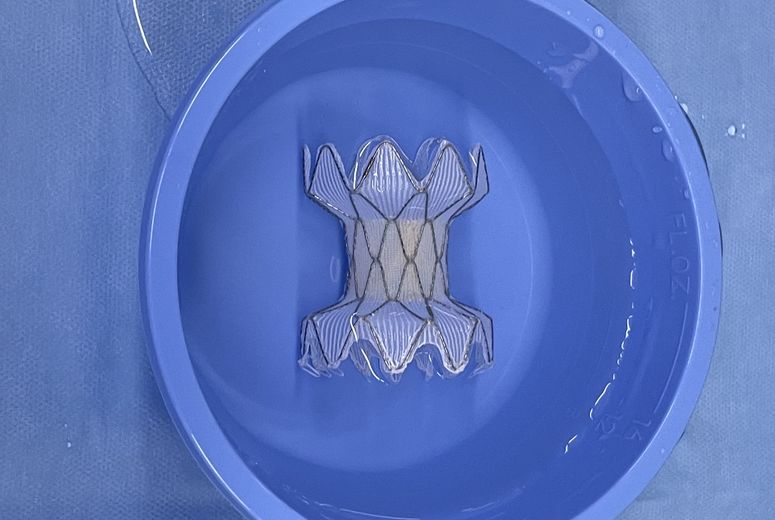
Loma Linda University Children’s Hospital recently inserted its first Harmony transcatheter pulmonary valve, which fixes a poorly functioning heart valve through a minimally invasive procedure, allowing children and adult patients living with congenital heart disease to go longer without the need for open-heart surgery.
Brent Gordon, MD, pediatric cardiologist, says the new type of pulmonary valve allows his team and others at the Loma Linda University International Heart Institute (IHI) to treat 70-75% of patients who couldn’t benefit from other available catheter-placed pulmonary valves.
“Having access to this cutting-edge technology will allow us to treat a larger portion of our children and adults living with congenital heart diseases and get them back to their regular lives in a matter of days,” he says.
The first patient who received a Harmony valve was an adolescent child who had little to no downtime. With the surgery performed just before the weekend, the patient returned to school on Monday. Because the Harmony valve is placed through a minimally invasive catheter procedure in a vein of a leg, recovery time starkly contrasts open-heart surgery.
Whereas recovery after open-heart surgery can take an estimated six weeks, after the Harmony procedure, a patient is back to regular activity within a week or less.
Children’s Hospital has been inserting pulmonary valves via catheter since 2010. However, the first generation of valves were rigid stainless steel, only working at a specific diameter. Unfortunately, that diameter only worked for approximately 20-25% of Gordon and his team’s patients.
“Those patients were just the tip of the iceberg of those needing a fully-functioning pulmonary valve,” he says.
The new Harmony valve doesn’t rely on stiff stainless steel to give it shape but is made of Nitinol — a flexible alloy of nickel and titanium, which allows the valve to maintain shape even after being collapsed into a very small catheter.
Children’s Hospital is one of only approximately 40 centers in the U.S. approved to use this valve. The company that created the Harmony valves examined all the heart centers across the nation, including their patient volumes, the number of surgeries, how many pulmonary valves were being placed, and other accreditations. As of early November, 300 Harmony valves were implanted worldwide.
Physicians don’t yet know how long the Harmony valve will last, but not indefinitely, says Gordon. However, it does delay the need for open-heart surgery to place another competent pulmonary valve.
“The Harmony valve is an emerging technology, so we don’t know everything yet,” he says. “But these early results have been very encouraging. So I’m hopeful this procedure will be a great option for our patients.”

